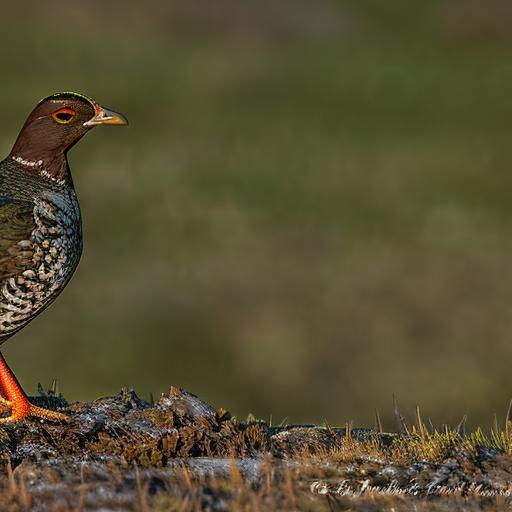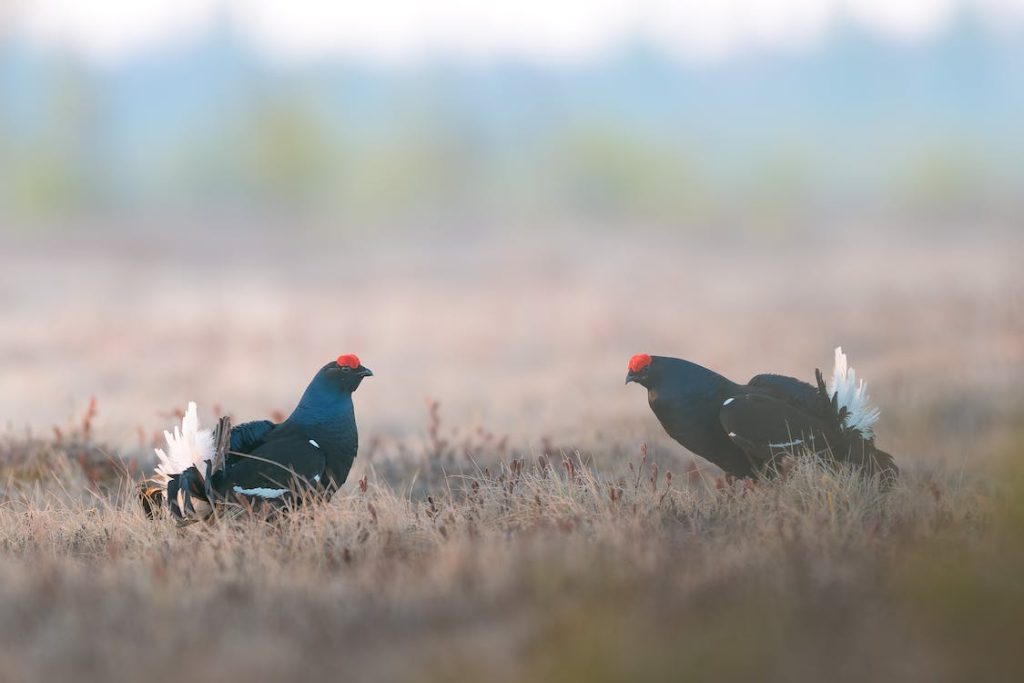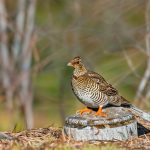Your cart is currently empty!

Revealed: The Absolute Best Time of Day to Hunt Grouse!

Table of Contents
Introduction
Ah, the thrill of hunting grouse! If you’ve ever ventured into the woods with the hope of bagging one of these elusive birds, you know that timing can make all the difference. I remember one crisp autumn morning, the kind where your breath fogs up in the cool air, and I was out in my favorite hunting spot. The sun had just begun to paint the sky with hues of orange and pink. It was one of those days that promised a good hunt. But as any seasoned hunter will tell you, even the most promising days can turn fruitless if you don’t understand your game. Over the years, I’ve come to realize that knowing the best time of day to hunt grouse isn’t just about luck; it’s about understanding their behavior, adapting to the seasons, and sometimes, just listening to the rhythm of the forest. So, whether you’re a newbie looking for your first catch or a seasoned hunter seeking to refine your skills, let’s dive into the world of grouse and uncover the secrets of timing.
Understanding Grouse Behavior
Grouse Daily Routines: What They Do at Different Times of the Day
Grouse, like many of us, are creatures of habit. In the early morning, as the forest awakens, you’ll often find them foraging for food, pecking away at the ground in search of insects, seeds, and berries. It’s a quiet time, and if you’re stealthy, you can catch them unawares. As the day progresses, especially during the hotter hours, they tend to seek shelter under the canopy, resting and staying cool. This midday lull can be a challenging time to spot them, but as dusk approaches, they become active again, often returning to their favorite feeding spots.
Factors Affecting Grouse Activity: Weather, Season, and Habitat
Now, while these routines give us a general idea, there are other factors at play. Weather, for one, plays a significant role. On overcast or drizzly days, grouse might remain active for longer periods, as the cooler temperatures are more to their liking. Seasonal changes also impact their behavior. In the fall, for instance, they’re busier, preparing for the colder months ahead. And let’s not forget about habitat. Different terrains and vegetation types can influence where and when grouse are most active. A dense pine forest might offer different opportunities than an open meadow or a mixed woodland.
How Grouse Behavior Changes During Mating Season and How It Affects Hunting
Ah, the mating season – a time of change and heightened activity. Typically, in the spring, male grouse become more vocal and visible as they perform their displays to attract females. They’ll often use specific “drumming logs” or clearings to show off their prowess. This increased activity can be a boon for hunters, as the usually elusive grouse become a tad easier to locate. However, it also means they’re more alert and wary, so approach with caution and patience. Remember, understanding their behavior during this time can give you that much-needed edge in the field.
Prime Grouse Hunting Times
Early Morning: The Pros and Cons of Hunting Just After Dawn
There’s something magical about the forest just as the first light breaks. The world is still, the air crisp, and the grouse? They’re often out and about, foraging and starting their day. Hunting during these early hours offers the advantage of catching these birds off-guard, especially before the forest fully awakens. However, the flip side is the challenge of visibility. The dim light can make spotting grouse a tad tricky, and there’s always the risk of startling other wildlife.
Activity Patterns of Grouse During the Early Hours
In the early morning, grouse are primarily on the move, searching for their first meal. They’re less wary, more focused on feeding, which can be an advantage for the observant hunter. Listen for the soft rustling of leaves or the faint calls they make. These are often telltale signs of their presence.
Tips for Early Morning Hunting: Gear, Approach, and Techniques
When hunting in the morning, it’s essential to wear layers. The temperature can be deceivingly cold before the sun fully rises. Opt for quiet clothing to minimize noise and consider a good pair of binoculars to help spot grouse in the low light. As for approach, move slowly, pausing often to listen and observe. Remember, patience is a hunter’s best ally.
Late Afternoon to Dusk: Why This is Often Considered the Golden Hour for Grouse
As the day winds down, many hunters swear by the late afternoon to dusk period as the prime time for grouse. The setting sun casts a golden hue, and the forest comes alive once more with activity.
How Grouse Behavior Changes as the Sun Sets
Grouse, sensing the approaching night, become active again, feeding and preparing to roost. Their increased movement, combined with the soft lighting, can make them easier to spot.
Strategies for Maximizing Success During This Time
Stay downwind and use the natural terrain for cover. The shadows cast by the setting sun can be your ally, helping you remain undetected. And always, always keep an ear out for their distinctive calls. They can often lead you right to them.
Adapting to Different Seasons and Terrains
How the Best Time of Day Shifts with the Changing Seasons

Seasonal shifts bring about a myriad of changes in the grouse’s world. In spring, as the days grow longer and the woods come alive, grouse are often active for extended periods, making late morning hunts just as promising as dawn or dusk. Come summer, with its hotter days, you might find more success during the cooler early mornings and late afternoons, as grouse seek shade during peak heat. Autumn, with its mosaic of colors, sees grouse preparing for winter, making them more active throughout the day. And in winter? Well, the cold often means they’re less active, but the snow-covered landscape can make tracking them a tad easier.
Terrain Considerations: How the Landscape Can Affect Grouse Activity and Your Hunting Strategy
The lay of the land plays a pivotal role in your hunting strategy. In dense forests, grouse might be more active during midday, taking advantage of the canopy’s shade. Open meadows or clearings, on the other hand, might see more activity during the early morning or late afternoon when the sun isn’t as harsh. Hills, valleys, and water sources all influence where and when grouse might be found. Always be observant and adjust your approach based on the terrain.
Personal Experiences and Lessons Learned from Hunting Grouse in Various Conditions
I recall a misty morning in a dense pine forest, where the grouse seemed to vanish into thin air. It taught me the value of patience and the importance of tuning into the subtle sounds of the forest. Another time, in a hilly terrain during autumn, the grouse were aplenty, but their keen senses made them tricky to approach. The lesson? Use the natural contours of the land for cover and always approach from downwind. Each terrain, each season has its challenges, but they also bring unique rewards. Embrace them, learn from them, and most importantly, enjoy the hunt.
Related Questions
Is there a ‘bad’ time of day to hunt grouse?
Well, “bad” might be a strong word, but midday can be a bit tricky. During the hotter hours, grouse often take shelter under the canopy, making them harder to spot. That said, every moment in the woods offers a lesson, so even if it’s not prime grouse time, there’s always something to learn.
How does weather impact the best hunting times?
Weather plays a big role. On cooler, overcast days, grouse might remain active longer, enjoying the mild temperatures. Rain can be a double-edged sword; while it might make grouse less active, their movements in the wet foliage become more audible. So, always adapt and keep an eye on the skies!
Are there specific calls or techniques to lure grouse during prime times?
Absolutely! Using a grouse call, especially during the mating season, can be effective. Mimicking the drumming sound males make can attract curious grouse. As for techniques, stealth and patience are key. Move slowly, use natural cover, and always be observant. Sometimes, it’s more about listening than looking.
How does the moon phase affect grouse activity?
Ah, the age-old question! While the moon phase is often discussed in relation to bigger game, its direct impact on grouse is less clear. Some hunters believe a fuller moon means more nocturnal activity, making grouse less active at dawn. But honestly, there’s no concrete evidence. It’s one of those hunting mysteries that keeps us coming back for more!
Summary
Well, there you have it, fellow hunters. As we’ve journeyed through the intricacies of grouse behavior, the shifting sands of seasons, and the undulating terrains, one thing stands clear: understanding is key. It’s not just about being in the right place, but also about being there at the right time. Remember, every day in the woods teaches us something new. Sometimes, it’s the subtle rustle of leaves that hints at a grouse’s presence, and other times, it’s the silent observation of their routines that gives us an edge. But no matter what, always respect the game and the environment. Share your stories, learn from your peers, and never stop being curious. Here’s to many more successful hunts, and may the forest always whisper its secrets to you. Cheers!

Herb has been a longtime lover of the outdoors. Whether it be hunting, camping, fishing or just getting outside to reset. Proud father and animal lover. Bourbon anyone?

by
Tags:
Comments
6 responses to “Revealed: The Absolute Best Time of Day to Hunt Grouse!”
-
[…] there a best time of day for pheasant hunting?Morning and late afternoon are usually prime times. Pheasants are most active then, feeding and […]
-
[…] hunting grouse requires a good understanding of the bird’s behavior, habitats, and routines, it’s equally […]
-
[…] a personal challenge, or simply the thrill of trying something different. Whatever the reason, hunting grouse without the keen nose of a dog is an entirely different ball game. As an experienced hunter who has […]
-
[…] optimal times for grouse hunting are during the early morning and late afternoon. These periods are when grouse are most active, […]
-
[…] If you’re interested in Oklahoma elk hunting, you may also want to check out this related article on the Old Oak Syndicate website: “Best Time of Day to Hunt Grouse.” Grouse hunting can be an exciting and challenging experience, and knowing the best time to hunt can greatly increase your chances of success. This article provides valuable insights and tips for maximizing your grouse hunting opportunities. So, if you’re planning a hunting trip in Oklahoma, don’t miss out on this helpful resource. Read more here. […]
-
[…] If you’re an avid elk hunter in Arkansas, you may also be interested in learning about the best time of day to hunt grouse. Grouse hunting can be a thrilling and challenging experience, and knowing the optimal time to pursue these elusive birds can greatly increase your chances of success. Check out this informative article from Old Oak Syndicate for valuable tips and insights on when to plan your next grouse hunting adventure. Read more here. […]

Categories
- Big Game Hunting (301)
- Deer (202)
- Reviews (3)
- Shooting (16)
- Slingshot (1)
- Small Game Hunting (42)
- Upland Hunting (126)
- Waterfowl Hunting (3)





Leave a Reply